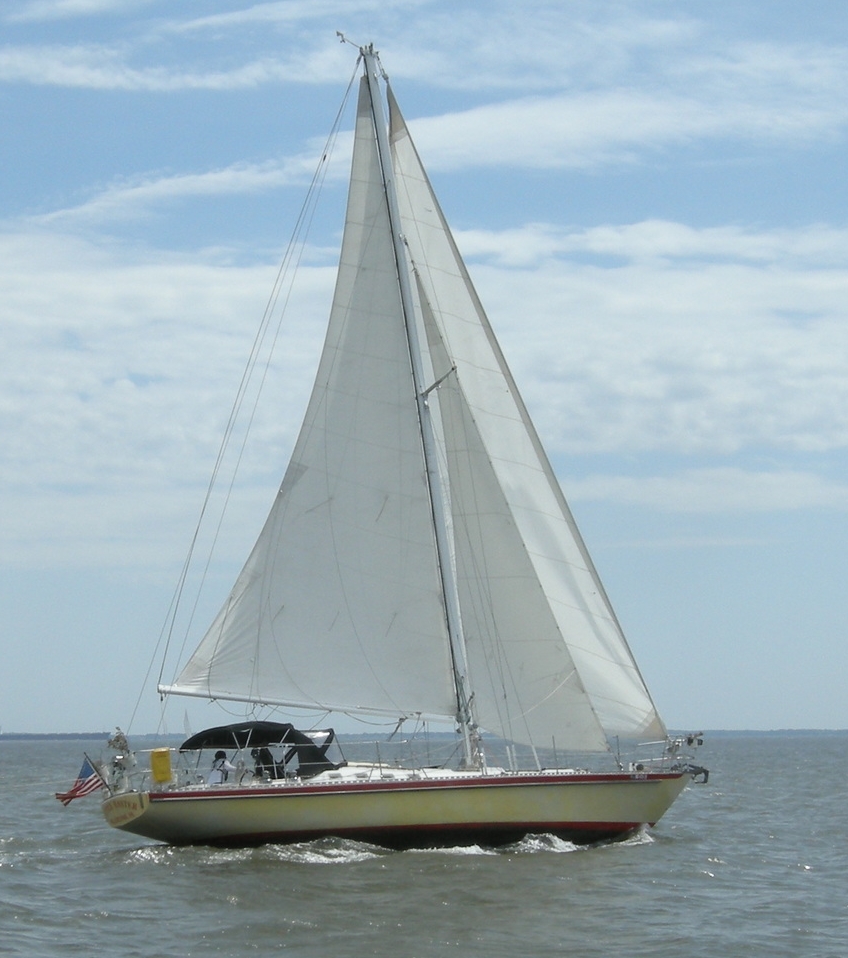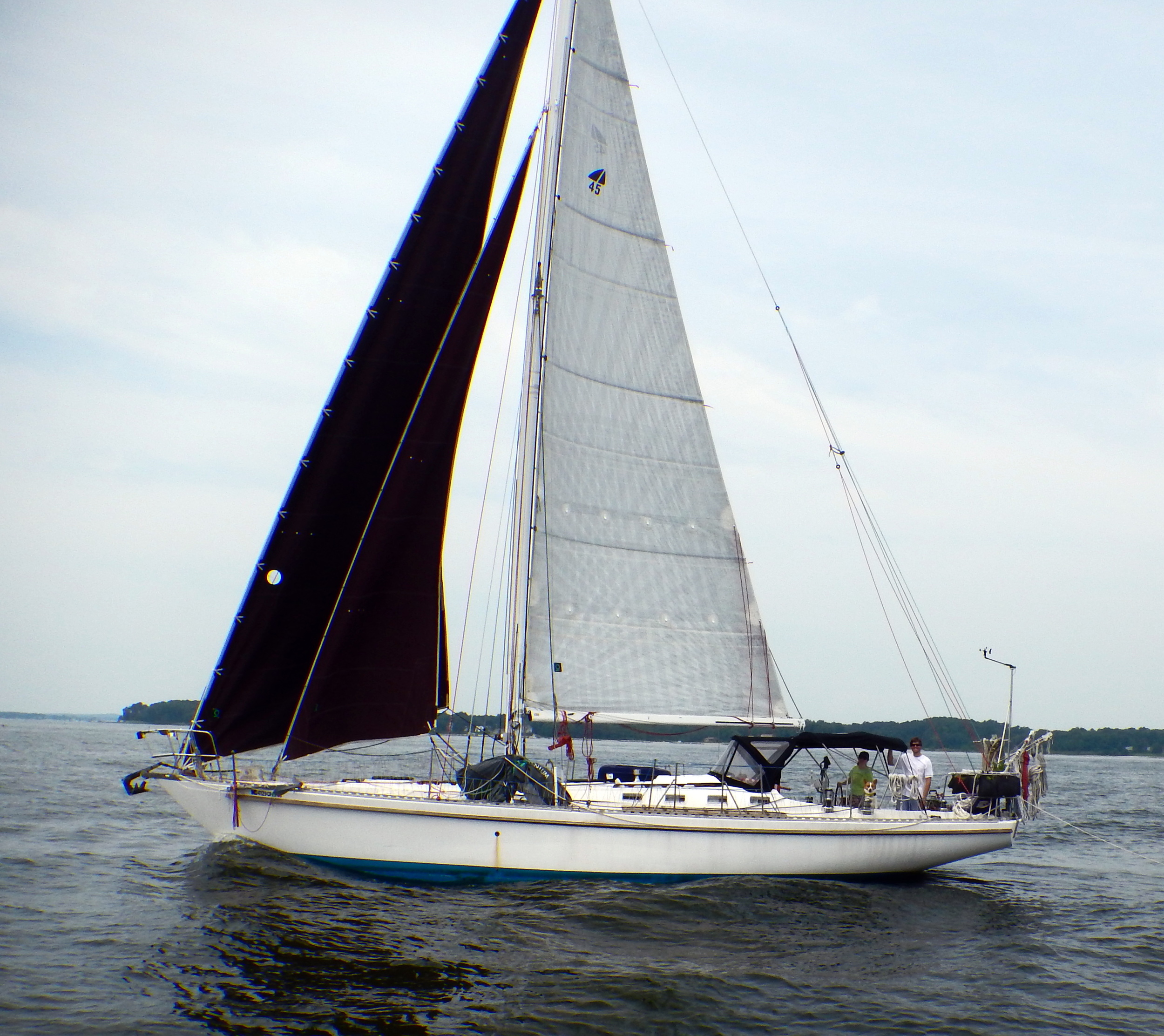I have noticed a shift in head sails lately. For awhile, everyone had massive genoas overlapping the mast and coming back very far. More boats now are coming with non overlapping jibs instead.
The explosion in genoa use was partly due to the rating rules that were applied to them. A massive headsail didn't add to your racing handicap as much, so it was almost like free sail area. The shift to non-overlapping headsails seems to be fueled more by simplicity of management.
Many modern boats feature self tacking jibs. For this to work, the clew needs to be ahead of the mast. I personally have a self tacker set up on my staysail and it is a dream when short tacking out of a harbor or river. I will purposely sail under canvased simply for the ease when sailing short handed.
It seems that windward performance is the top priority of modern sailboats. To do this, they have switched from shorter rigs with short and long sails to much taller rigs with skinny sails
High aspect ratio sails offer more lift compared to the amount of drag generated by the sails, while low aspect ratio sails will generate more drag for the same amount of lift. This is because the longer the air is in contact with the sailcloth, the more resistance it generates.
It seems counter-intuitive that the shift towards high aspect ratio sails would generate more use of long overlapping, low aspect ratio headsails. This is because all the sail area behind the mast helps to move the center of effort aft, pulling the vessel to windward rather than creating lee helm. A large overlapping headsail paired with a high aspect ratio mainsail will really help drive a sailboat to windward.
More to come in Part 2




